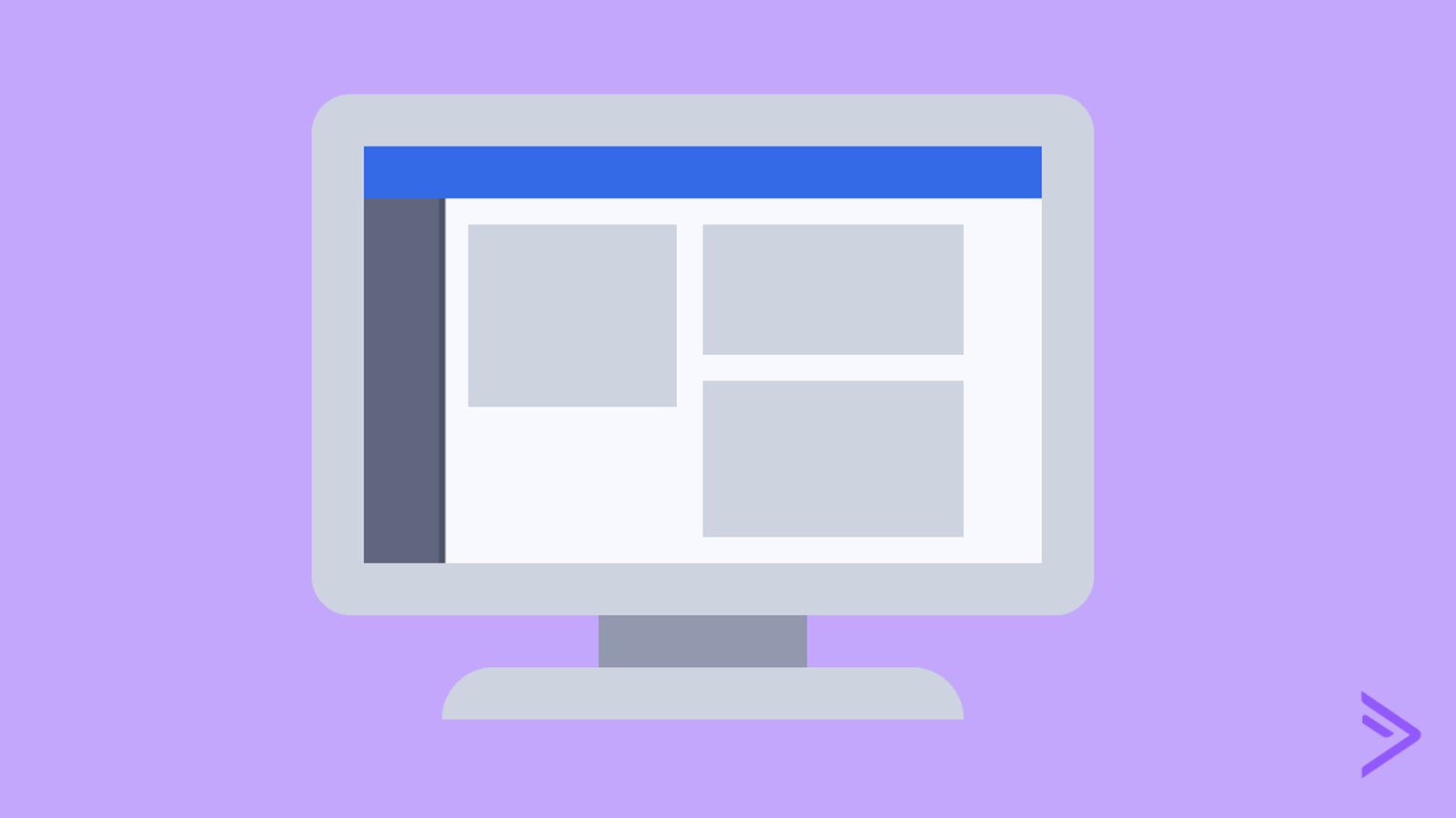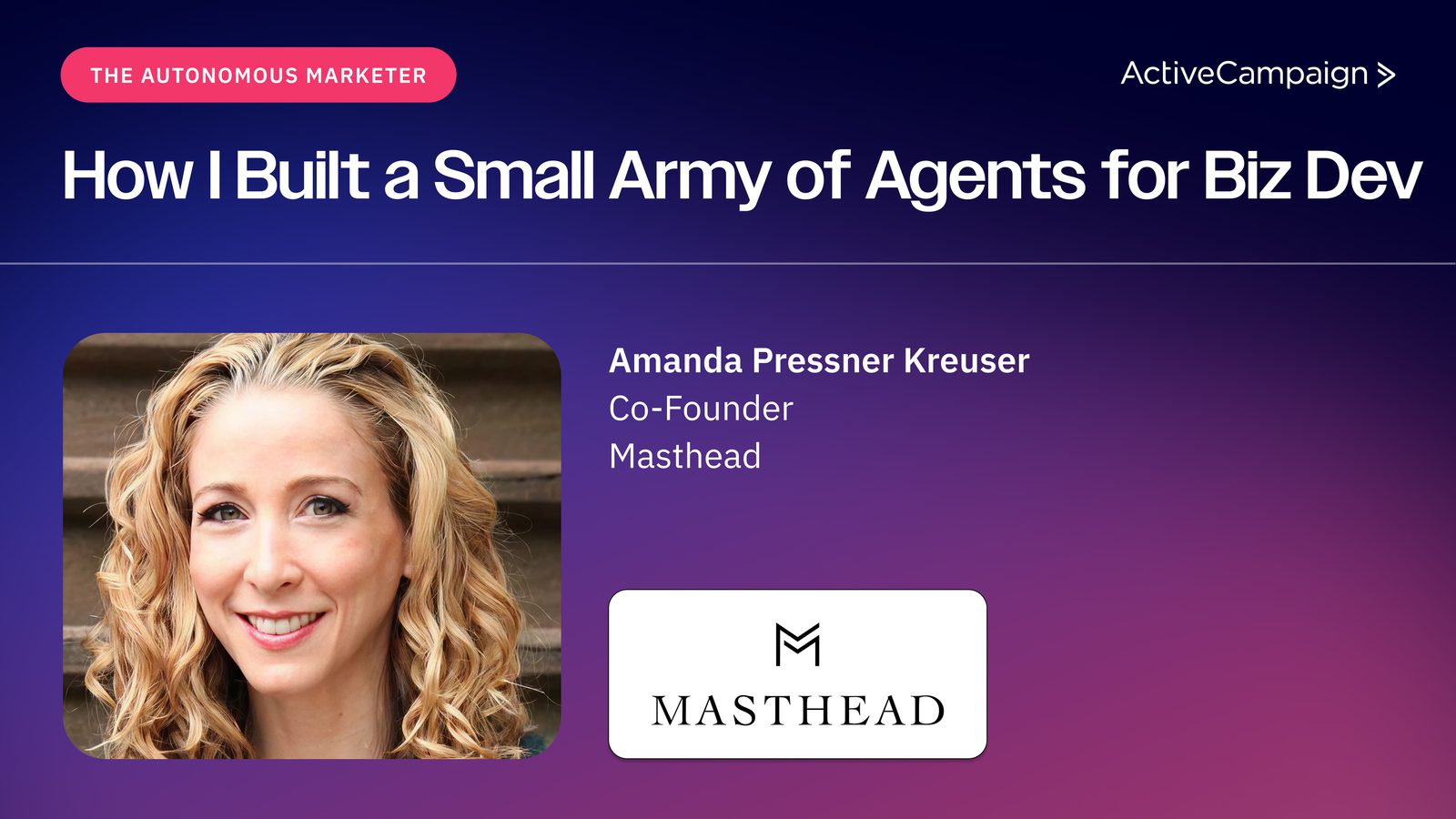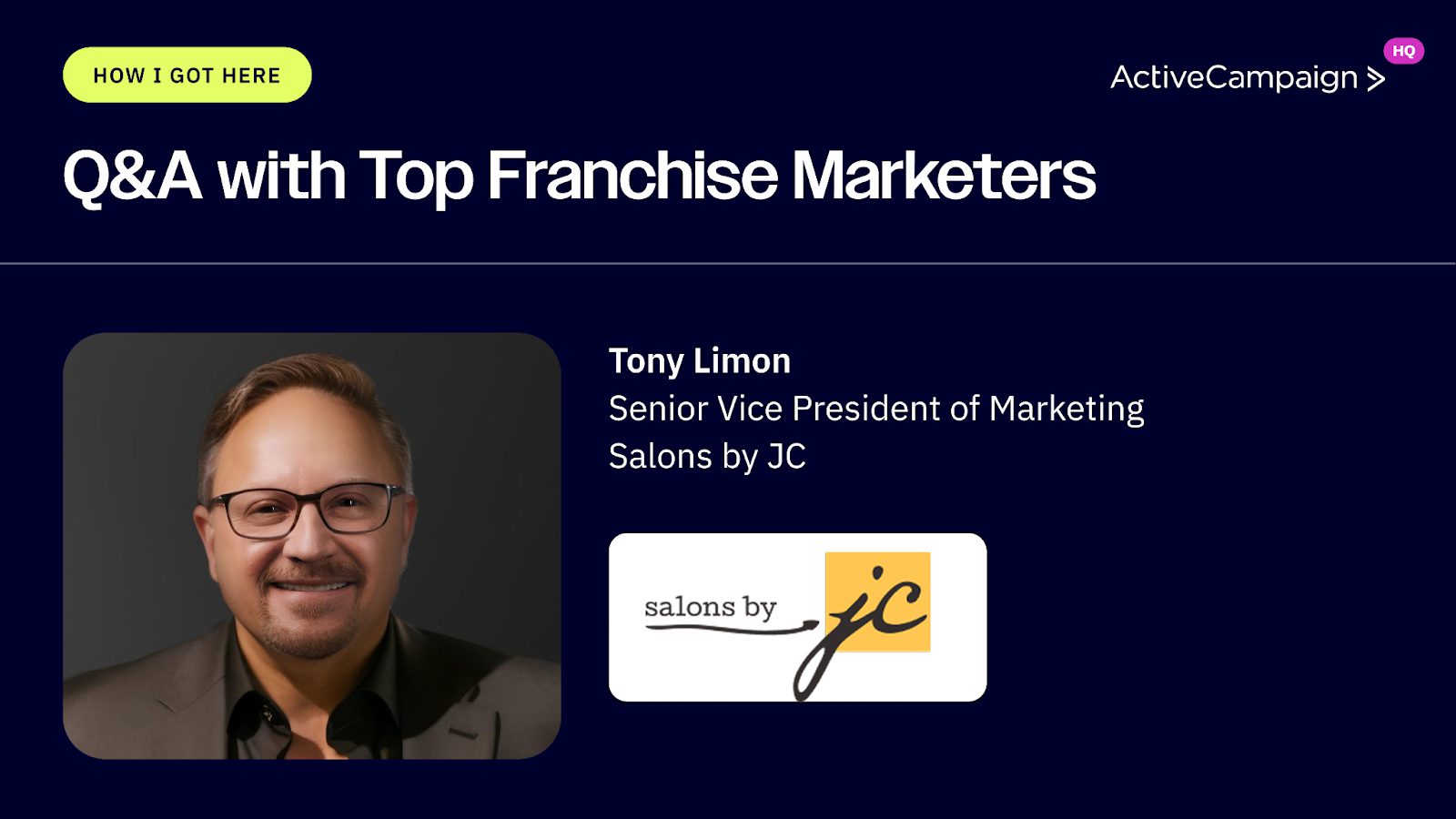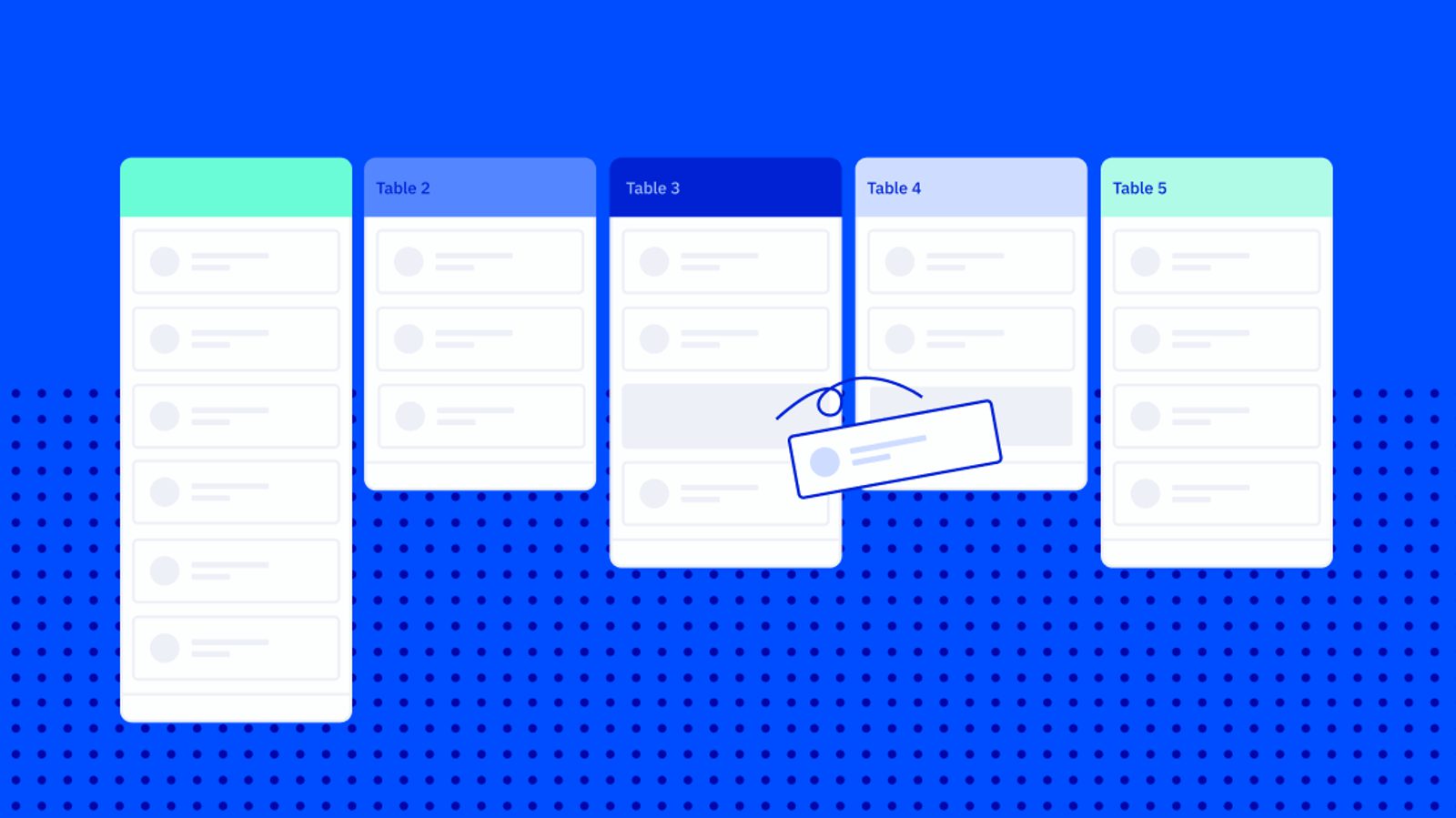Have you ever clicked on an ad and gone to a page that was only about one thing?
That’s a landing page.
Have you ever gotten an email about an upcoming event and clicked-through to a page specifically for signing up?
That’s a landing page.
Landing pages are everywhere because they’re an incredibly useful marketing tool. ActiveCampaign’s Sr. Product Marketing Manager Kara Andersen and Sr. Marketing Manager Justine BaMaung went over all things landing pages — and show you how to use landing pages in ActiveCampaign.
Watch the recording above or read the recap below to learn:
- Landing pages 101
- 4 tips for building a high-converting landing page
- 4 common landing page use cases for growing businesses
- How to build & publish a landing page in ActiveCampaign in a few easy steps
Landing pages 101
A landing page is a stand-alone web page created about a specific topic. The goal of a landing page is to convert visitors into leads by funneling traffic toward a call to action.
Landing pages get their name because traffic comes to them from other online destinations (like Facebook Ads, Google Ads, email marketing, or other marketing channels), and the visitor “lands” on this page.
Why should you bother with landing pages?
Landing pages are optimized for conversions! This helps increase your conversion rates and lowers your cost of acquisition. The goal of a landing page is simple: get people to sign up.
“Typically, if you think about a homepage, it's designed with a general kind of exploratory purpose in mind. It often speaks to your brand and your corporate values, sometimes it can be loaded with links, and it almost always has navigation at the top and the bottom. And that can lead to a multitude of different things, whether it's info about your team or your company, or your products and services,” says Justine.
If that isn’t reason enough, landing page tools let you design and publish pages quickly, without the support of a development team. Pre-built page templates, drag-and-drop designers, and various integrations let you create new landing pages, collect leads, and send automated follow-ups in minimal time with maximum impact.
How to build a landing page
There are 4 tips for building a high-converting landing page:
- Stick to one offer
- Create an engaging and relevant headline
- Highlight your features and benefits – and emphasize the benefits
- Give people social proof
1. Stick to one offer
“Your landing page should just focus on one offer. All the elements on that landing page should speak to the offer and you want to remove the distractions and keep your visitor focused on the intent of the page. This oftentimes includes removing navigation – both the top and the bottom – removing any other links that might distract the user and focusing on one call to action,” says Justine.

“The one offer becomes really important because, in this scenario, multiple offers actually don't work to your advantage. Users hesitate when they see multiple offers, and they oftentimes can't make a decision. And research shows that the more choices that you give people, the longer they actually take to make the decision, the less motivated they are to do so,” notes Justine.
“It's great that your company has multiple offerings and multiple products and solutions. But when someone comes to your landing page, you really want to focus on one. If your landing page has more than one offer or one CTA your readers could get distracted, and they're less likely to convert.”
2. Create an engaging and relevant headline
When building a website, you are looking to offer general information about your business. A landing page is much more specific. The headline should match the message that prompted your visitor to go to the page in the first place.
“Your headline is kind of like your first impression, right? It’s the first impression your user is going to have about your landing page. And what they need to understand from that headline is ‘What will I get from visiting this page?’ So you should be talking to what this page is about,” says Justine.
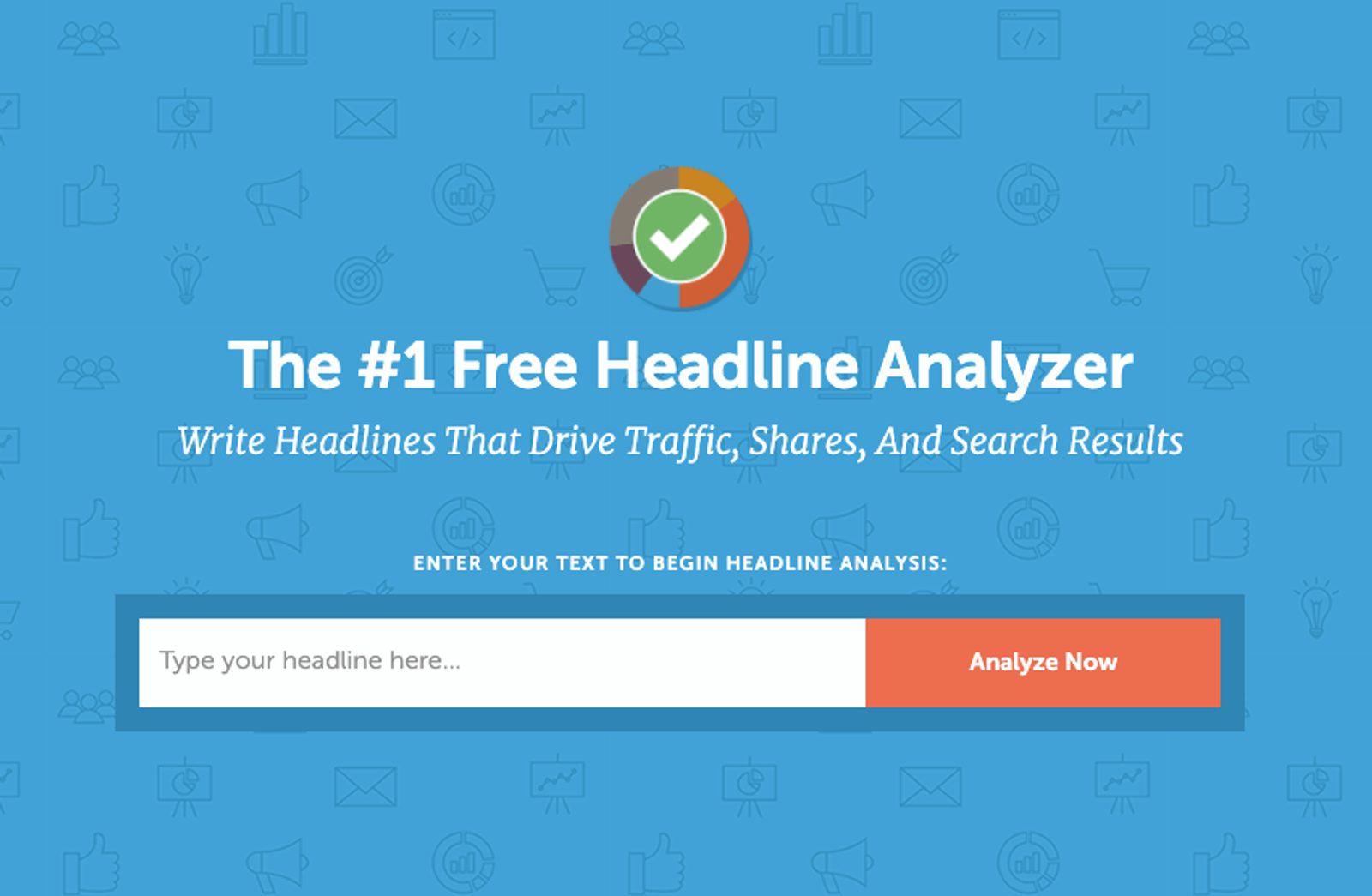
“It should also include message matching. Message matching is a concept in which you use the same language that the user saw in the ad or the email campaign that led them to your landing page. It's really important to message match because it gives the user the confidence that they're on the right page and that they're getting the information that they need,” says Justine.
3. Highlight the features and benefits – and emphasize the benefits
You want to outline the features and benefits of your offering and emphasize the benefits.
Your copy should tell them why they want to stay and why they should convert,” says Justine.
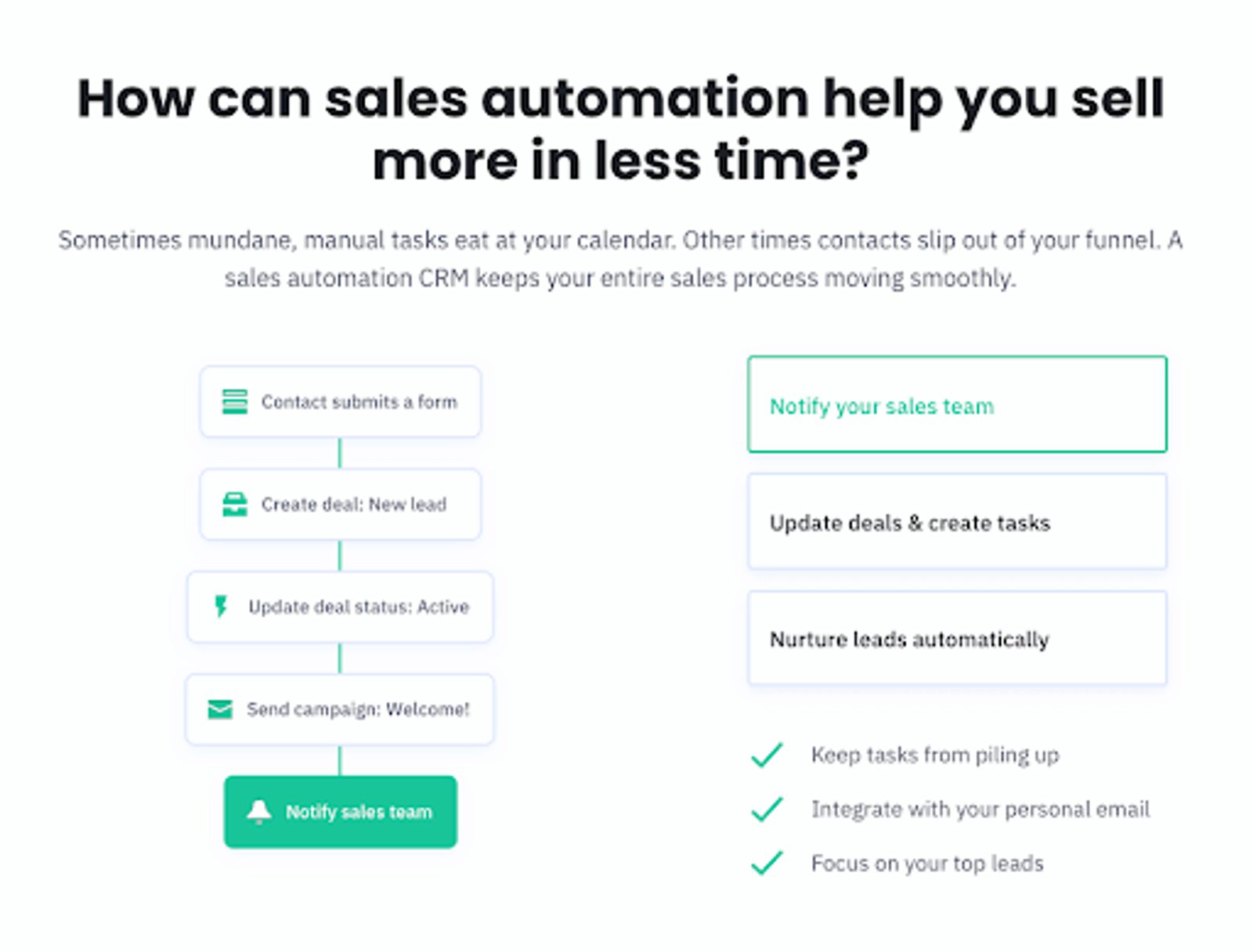
“According to some research from the Nielsen Norman Group, users only stay on a web page for about 10 to 20 seconds. So you really want to capitalize on those 10 to 20 seconds with the headline first, but then really talking about the benefits.”
“If the benefit is specific, it's even better because users can see themselves either using your service or using your product. You want to demonstrate it in a way that's going to resonate with them and you want them to feel confident that when they convert, they're going to get what you're saying you're going to give them.”
4. Give people social proof
Social proof can include customer testimonials and other forms of social proof that help convince visitors and reinforce their decision.
“People really want to see exactly how your business has helped someone else. The social proof really gives them that confidence and it reinforces their decision to convert with you. One thing that you want to keep in mind is authenticity. Real customer names and photographs do really well in these scenarios. It gives your reader someone to relate to and it gives them the feeling of if this product has helped this company or this user, it can also help me,” says Justine.

“Some other things that are really helpful are data points. Users really love to read data – hard numbers and proven results. And also pain points! You really want to highlight are the problems that you're helping to solve so that your reader knows that your offering can help solve their problems.”
This video is a segment of “Growth Decoded” — a show that investigates the relationship between the customer experience and business growth — one topic at a time. Register here and never miss an episode!
4 common landing page use cases for growing businesses
Where can you use landing pages? Truthfully, for a lot of things. But there are 4 common landing page use cases that are helpful for growing businesses to know.
- Paid ads
- Lead magnets
- Event sign-ups
- Special offers and promotions
1. Paid ads
“Whether it's Google search, Facebook Ads, Instagram, or something else, a landing page is a really great way to create a very specific page for the campaign that you're running. And this goes along with message matching, again, where you want to include the language that they saw on the ad, and you want to bring that to your landing page,” says Justine.
“In this scenario, a customer is searching for a newsletter tool.”

“What we've done is we've made sure that we mentioned newsletters in the headline so that they know what they're coming to the page for. We're answering the questions they have around newsletters and noting that we're able to create beautiful and personalized newsletters for them with this tool. It's got one very, that one strong CTA which is to start a free trial and then we also have some social proof.”
2. Lead magnets
Lead magnets can be:
- White papers
- Guides
- Checklists
- Toolkits
If you're going to ask a user to provide their email to become part of your subscriber list, you want to provide something in return.
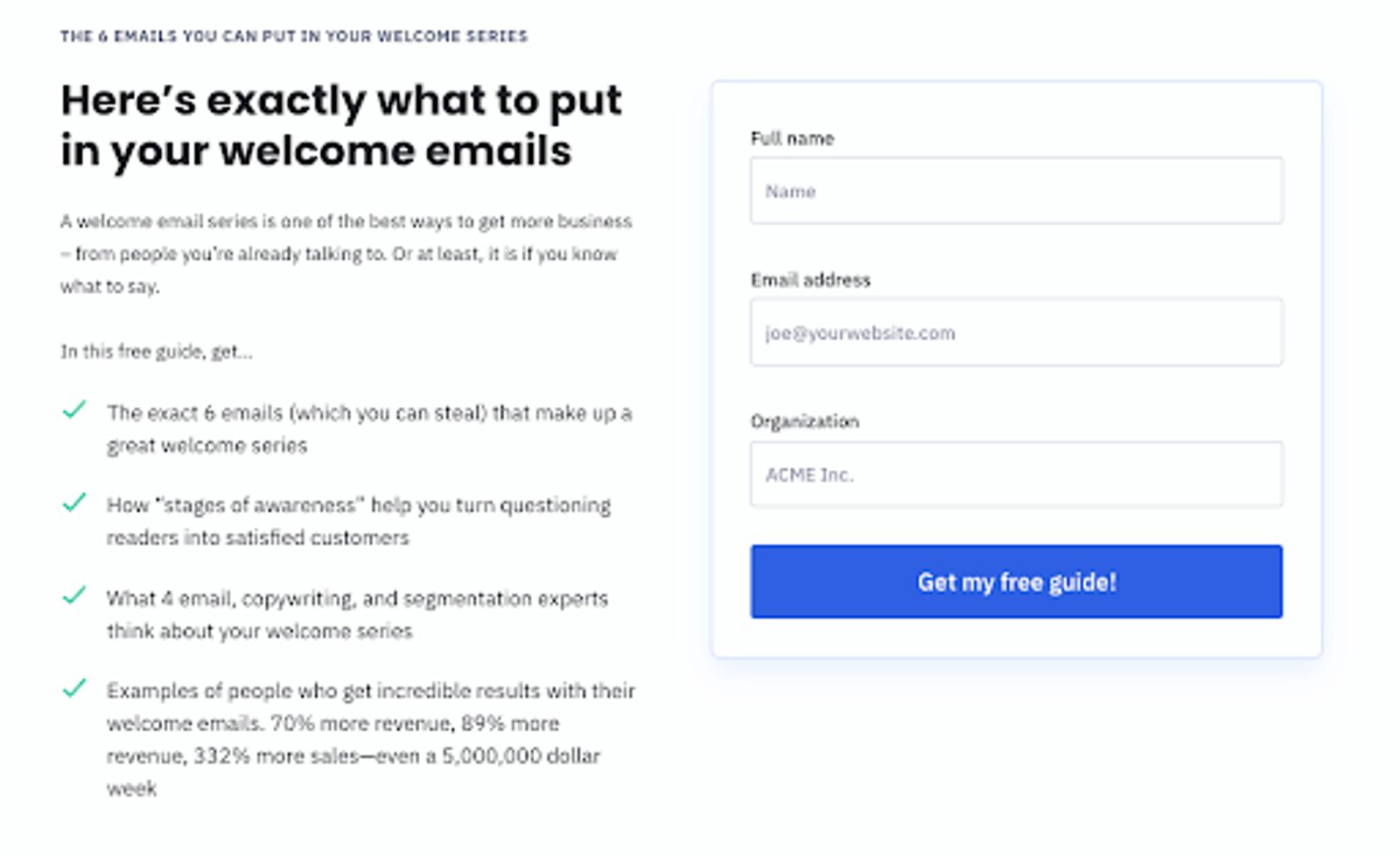
This lead magnet landing page really just focuses on what they're going to get in return.
“What you'll see here is like there is no navigation, there are no additional links, what you really want to focus on is just getting the user to convert on this page and removing the distraction. It's not necessarily about your products or services at this time. It's more about showing up and really growing your brand – and then increasing your subscriber list and eventually getting these leads to potentially convert into customers for you,” says Justine.
3. Event sign-ups
Signups are also a great use case for landing pages.
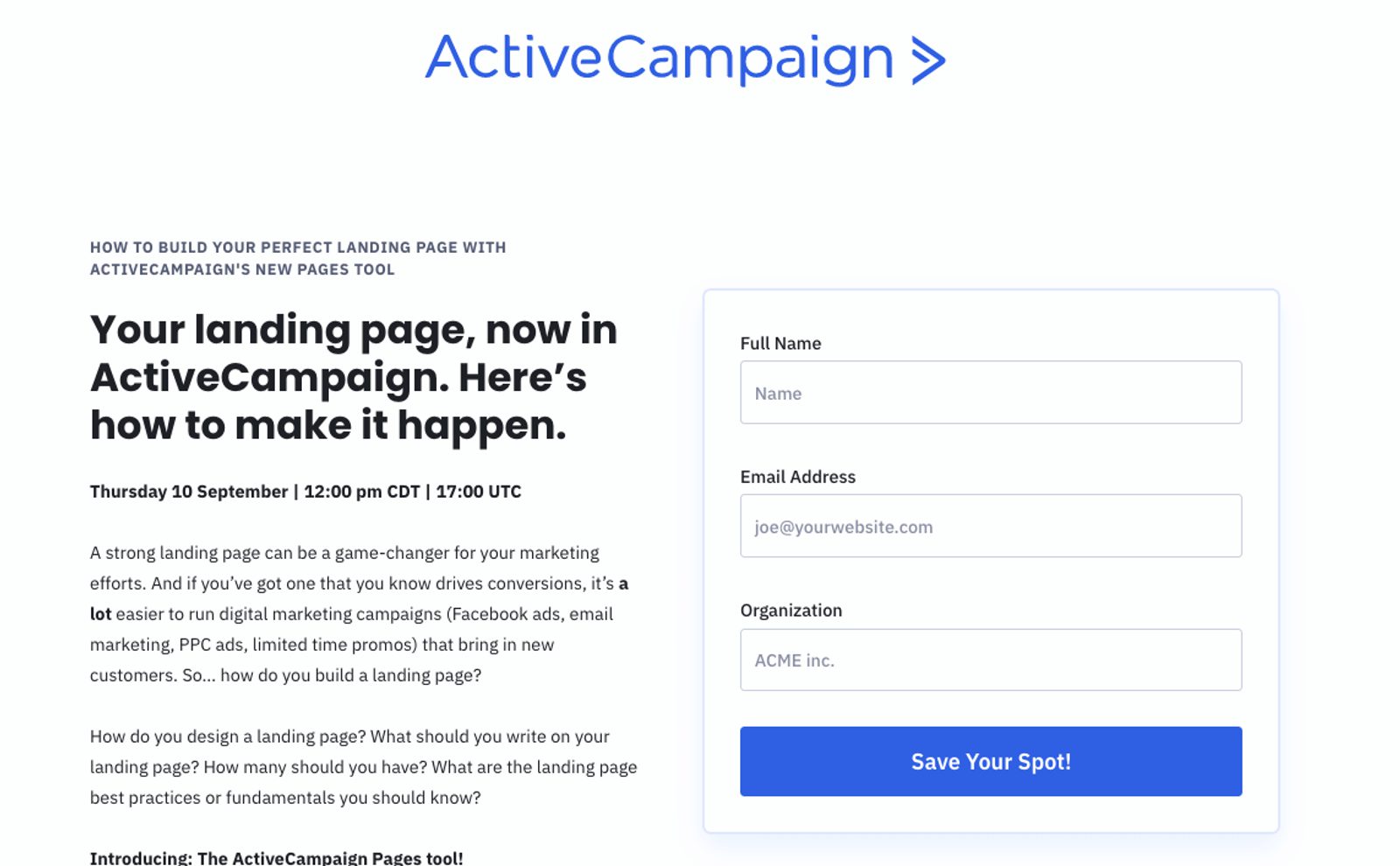
A landing page with a clear description and a well-placed form can make getting sign-ups a breeze.
“We actually use the login page to get everyone here to sign up for this webinar. It's a great way to talk about the event and highlight what's going to happen in the event as well as the date, time, and other important information (while removing all the noise that comes along with a traditional webpage). No navigation, no footer, keeping it very simple and very succinct to the event itself,” says Justine.
4. Special offers and promotions
A great landing page use case is offers and promotions.
“If you think about offers and promotions, a lot of the time they are targeted to specific users, and you want to make sure that they see the right landing page. You don't necessarily want to show it to everyone else who isn’t eligible for your offer.
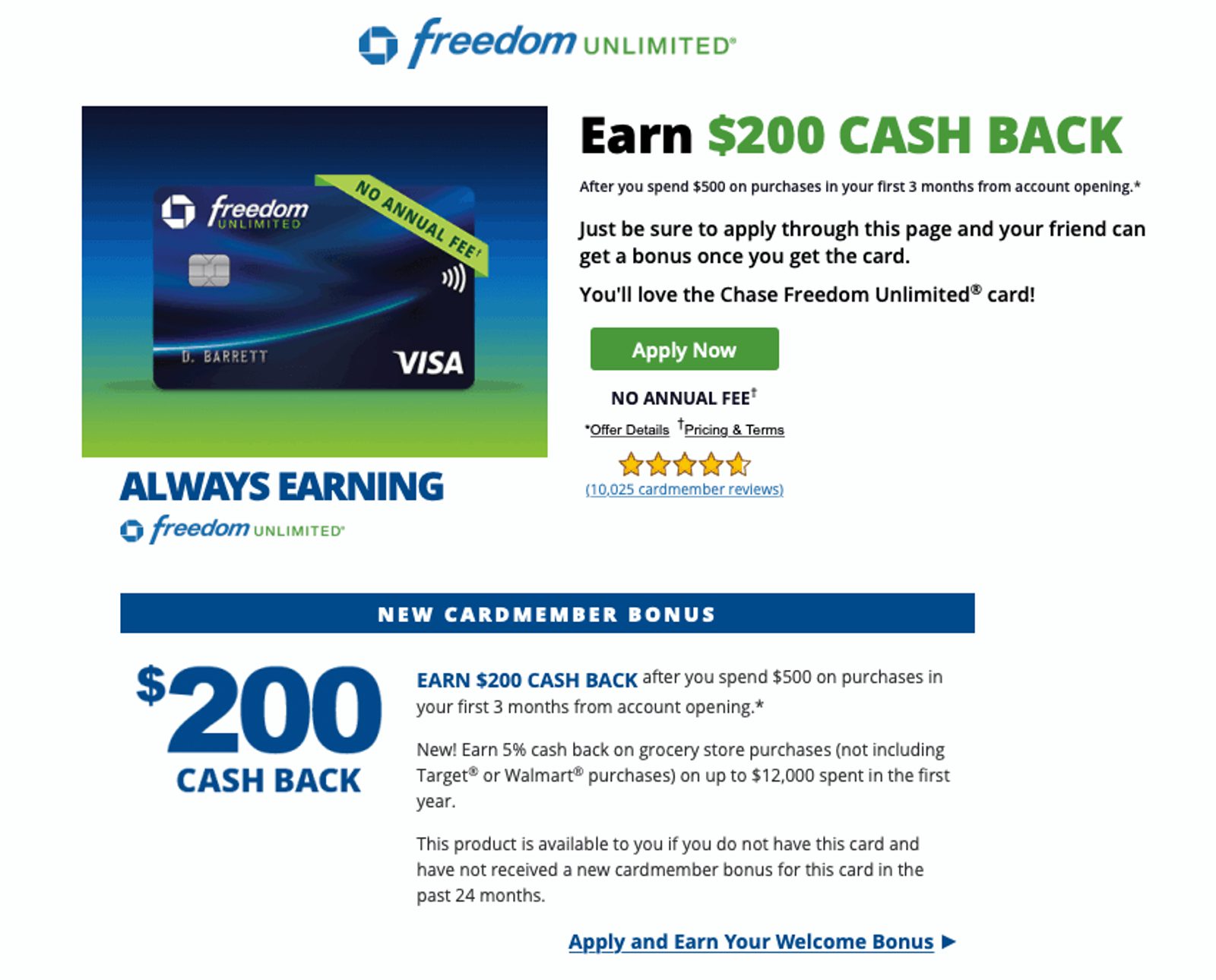
“This is a great example that the financial industry uses it quite often. Chase knows that I'm a Freedom Unlimited customer. They sent me something very specific for Freedom Unlimited, and they are creating this landing page that's specific for that offer,” says Justine.
“You can send a very targeted email to a customer, and then send them to a landing page that's high-converting because it's just going to focus on that promotion. You want to talk about the benefits, you want to have a great headline, and get them focused on that promotion. And you don't want people who aren't eligible to see that.”
How to build & publish a landing page with ActiveCampaign
“There are plenty of really great landing page builders out there. Some get really complex, and they provide all kinds of customization and optimization options. Others are going to be simpler and just make it easy to spin up a landing page in a few quick minutes. Many of these tools are connected to email marketing and marketing automation platforms as well so that you're able to build your list and then send your campaign emails all in one place,” says Kara.
It’s now easier than ever to create landing pages for your every need – ActiveCampaign just launched Pages! And the steps to create one couldn’t be simpler.
- Create a landing page with drag-and-drop functionality
- Customize your design
- Add a form
- Add site tracking & analytics code
- Publish!
“Our landing page tool lets you easily create and publish landing pages that are fully integrated with our customer experience automation platform. So this means that you can use all the info that you have about your audience – their preferences, specific concerns, behavior, and attributes like location, for example – to build more relevant landing pages.”
When you can build more relevant landing pages, you can capture more leads and grow your audience. Not only that, but you can continue to deliver those relevant experiences to those contacts after they convert on your page by sending a perfectly timed email, using Facebook ads to stay top of mind, or following up with a personalized note or phone call.
Ready to get started? Build your first landing page by signing up for a free trial–no credit card required

